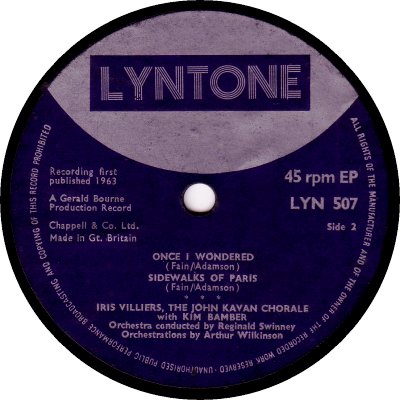
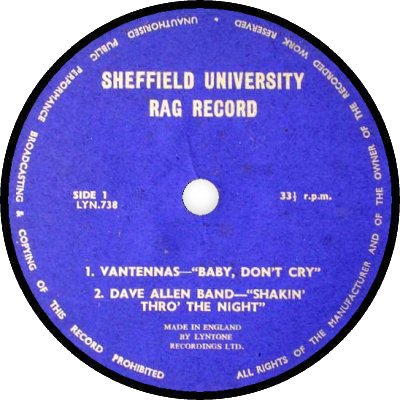
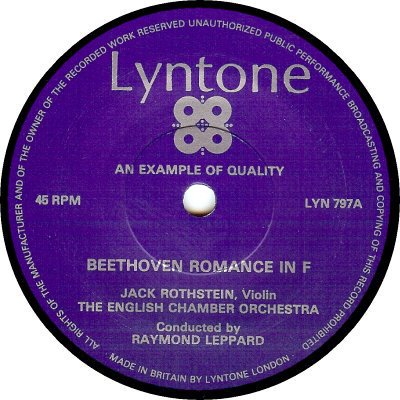
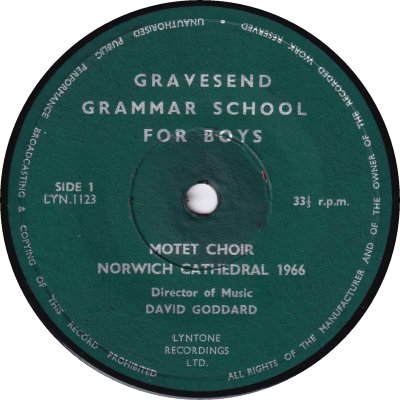
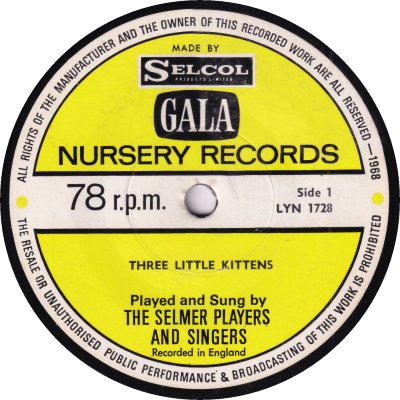
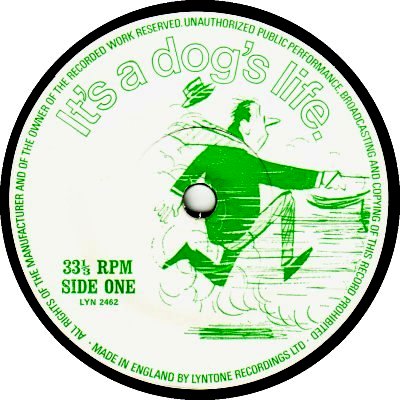
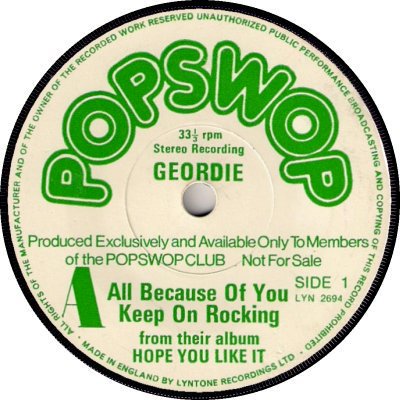
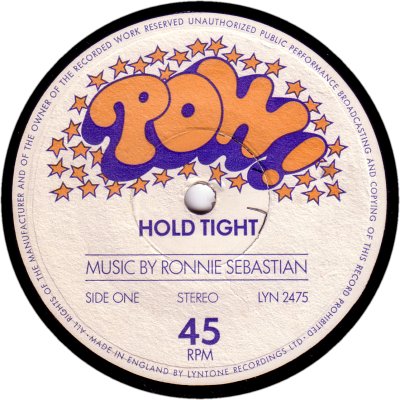
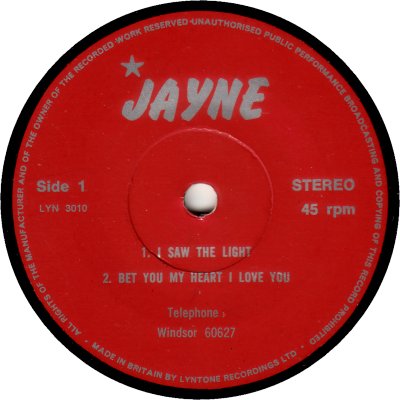
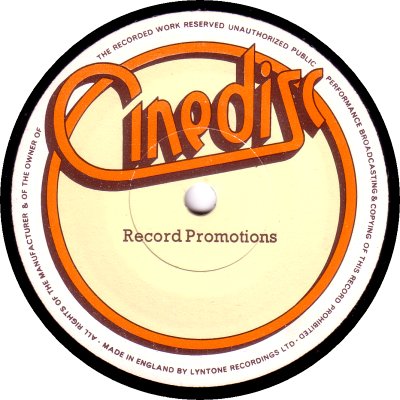
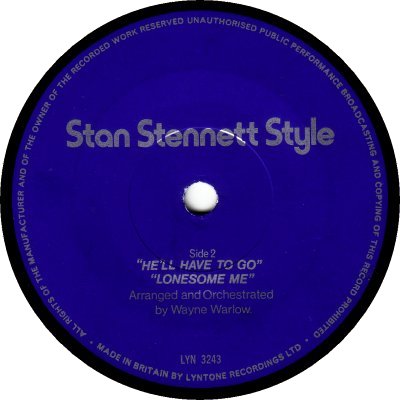
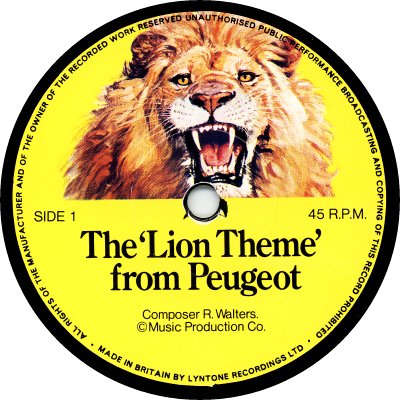
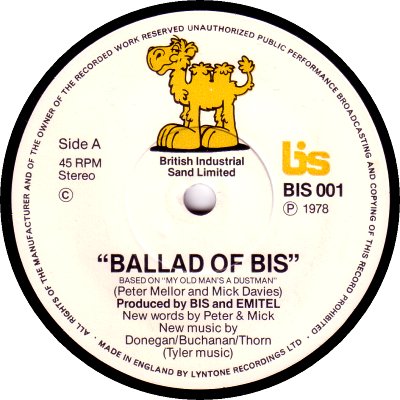
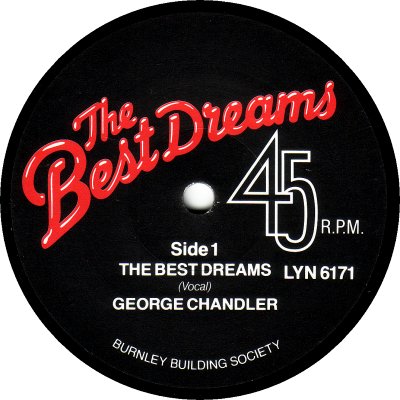
Lyntone was not often seen as a record label, as such, but its LYN prefix appeared on literally thousands of items during the '60s, '70s and '80s, as it does on the specimens pictured above. Lyntone was a pressing plant, and was based in Upper Holloway, London; it pressed quantities of albums, singles, and - especially - flexi-discs, to order. As shown by the Jayne EP, the Stan Stennett EP and the Winalot Dog Food single shown above, some customers merely had their names (9, 11) or an appropriate illustration (6) on the labels. Others used more conventional designs with proper logos and discrete numerical series. Some of these records were intended for sale, such as those on the Amalisa label (q.v.) and a host of other DIY labels; some, such as the British Industrial Sand record (13), were not. The 'Best Dreams' single (14), which dates from 1979, was a promotional record for the Burnley Building Society; the song's lyrics were by Salman Rushdie. Helpfully, Lyntone products often have a reference to the company at the bottom of the labels, as can be seen in many of the examples above. The only reference to Lyntone that I've been able to find in the Trade press of the 1970s came in 'Record Retailer' of the 22nd of May 1971, which reported that the company had opened a new plant in North London, at 7-9 Wedmore Street, N19, and would now be capable of making vinyl records - up till that point it had only made what the article referred to as 'slim discs'. Previously if the customer wanted vinyl records the company had the pressing done elsewhere; the Gravesend Grammar School EP shown above (4) was made through British Homophone.
Lyntone doesn't appear to have been all that fond of putting dates on its products; I've happened upon the occasional disc which has been dated, so I thought I'd include the earliest and latest of them in any given year below as a rough guide for reference purposes; be warned that there's a degree of overlap - some records with higher numbers can be found with dates that are lower than some of their nearby lower-numbered ones, if you see what I mean. In addition it should be noted that the year in which a track was cut or pressed by Lyntone may not necessarily be that in which it was released by the client. The records often had their number impressed into the vinyl on the run-off, that bit between the music and the label; so if you can't find it printed on the label, look for it there. Each side had its own number, the Stennett EP being 3242 / 3243, so there weren't quite as many issues as the numbers would suggest. Thanks to John Timmis for the second scan, to Robert Bowes for the third, and to Sam Mauger for the seventh.
LYN-199=1961; LYN-299=1962; LYN-350=1963; LYN-507=1963; LYN-510=1964; LYN-757=1964; LYN-771=1965; LYN-948=1965;
LYN-1114=1966; LYN-1145=1966; LYN-1243=1967; LYN-1370=1967; LYN-1664=1968; LYN-1677=1969; LYN-1962=1969; LYN-1967=1970;
LYN-2147=1970; LYN-2157=1971; LYN-2375=1971; LYN-2418=1972; LYN-2560=1972; LYN-2577=1973; LYN-2767=1973: LYN-2797=1974;
LYN-3032=1974; LYN-3034=1975; LYN-3258=1975; LYN-3279=1976; LYN-3824=1976; LYN-4040=1977; LYN-5008=1977; LYN-5056=1978;
LYN-5990=1978; LYN-6015=1979; LYN-7753=1979; LYN-7846=1980.


Copyright 2006 Robert Lyons.

